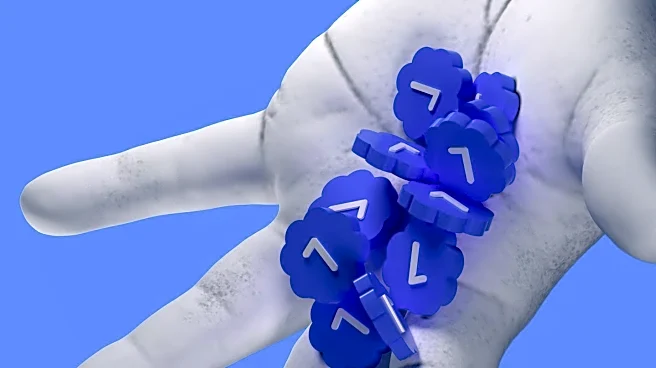What's Happening?
E2 Endovascular Engineering, Inc. has presented the results of its ENGULF pivotal study at the VIVA conference in Las Vegas. The study evaluated the Hēlo Thrombectomy System, a novel device designed to treat
pulmonary embolism (PE) by removing blood clots from the lungs. Dr. Andrew Klein, the ENGULF National Co-Principal Investigator, shared that the study met its primary safety and efficacy endpoints, demonstrating a 0.95% major adverse event rate at 48 hours and a 25.1% reduction in RV/LV ratio. The study involved 105 patients across 19 U.S. hospitals and was conducted by 40 physician operators. The Hēlo system is noted for its unique combination of a 24F clot engagement zone and 15F heart crossing profile, integrating powerful aspiration with advanced clot remodeling.
Why It's Important?
The positive results of the ENGULF study are significant for the medical community, particularly in the treatment of pulmonary embolism, a leading cause of cardiovascular death and disability. The Hēlo Thrombectomy System's success in the study suggests a potential advancement in the standard of care for PE treatment, offering a safer and more effective option for patients. This development could lead to improved patient outcomes and reduced healthcare costs associated with PE management. The study's success also highlights the potential for further innovation in medical technology, driven by the collaboration between clinical insight and engineering excellence.
What's Next?
Following the successful presentation of the ENGULF study results, E2 Endovascular Engineering plans to continue sharing additional outcomes and furthering its mission to redefine PE intervention. The company is likely to seek regulatory approval for the Hēlo Thrombectomy System, which is currently limited to investigational use. If approved, the system could become a widely adopted tool in the treatment of pulmonary embolism, potentially influencing clinical practices and guidelines. E2's ongoing collaboration with clinical partners and patient volunteers will be crucial in advancing this technology and exploring its applications in other areas of venous thromboembolism treatment.












